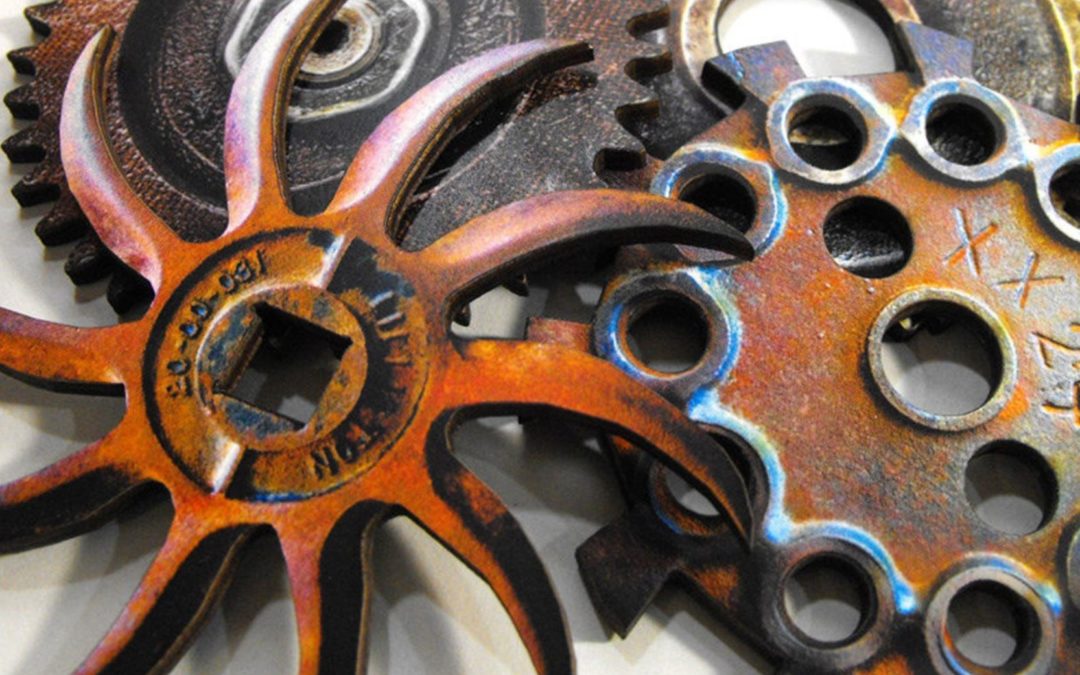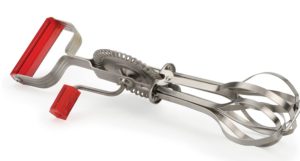I’ve been baking a lot during this pandemic time of staying at home. I’ve learned to bake artisanal bread and from-scratch cakes. I have lots of fancy tools for baking, but I also have an old hand egg-beater my mom used. You know, the kind with red knobs on the handles, a large gear wheel and two sets of rotating blades. Over time the blades get bent and misshapen and besides becoming noisy they make the work hard. But I keep it as a reminder of simpler times – and sometimes it just makes work easier and faster.
That old egg-beater came to mind as I was recently coaching some CEO clients. I was thinking about how their energy and actions (bold, vigorous, subtle, or artful) direct and support their teams to achieve big goals. I wondered what drives their habits and openness to change. Are they using a leadership style that’s comfortable and familiar or learning new tools and “baking methods?”
The Lessons in an Egg Beater
It’s a wonderful, simple tool I never thought to understand. I should have taken physics or car mechanics, and I would have learned about what gears do: how they transmit power from one part of a contraption to another and increase and direct the power of a rotary force; that smaller wheels turn more quickly using less force, while larger wheels turn more slowly needing more force. And finally, each time you pass power from one gear to another you impact speed, force, and direction. I never thought about all this when beating an egg! But I think about it when I consider what leaders do and their impact on others. Leaders not only hold the crank, but they also design the gear configuration.
The Power and Impact of a Leader
Let me shift to a gear analogy that is more gender neutral – bike riding. Most of us learned to ride a simple single-speed bike with coaster brakes, graduating to a 10 or 18 or even 21–speed with hand brakes, and learning to shift gears and evenly engage brakes as our route changed. Biking’s such a wonderful feeling of power, freedom and independence.
Early in the life of an organization, a founder/CEO is like a rider on a multi-speed bike at the start of a long, challenging ride – full of hills, sharp curves and rough patches in the road. The CEO brings most, if not all, of the initial power to the task using tremendous energy and attention to begin and sustain forward motion. Like a bike rider using a “big gear” up front, our CEO-rider must exert strenuous and steady pedal power. He/she must connect with and lead multiple “cogs” of the business to move just a few feet at a time – exhausting but also exhilarating – for they can see the results of their effort as the organization begins to gain momentum.
As the company crests its first big hill and enters the next leg of its journey, the leader must shift gears to match the new terrain. Here begins the challenge for riders and leaders: when to shift, to what gear, given the emerging terrain, for how long and for what outcome?
The Shifting Role of a Leader
Every successful entrepreneur knows that building a business can burn you out, and to grow a sustainable business will require pacing, leveraging, and shifting their role. In bike racing there is the strategy called drafting where a team member moves to the front of their team line to create a space behind where the wind resistance and amount of energy required to pedal is less. Those behind are drafting, while the leader pulls them. Pulling is grueling for the leader who is exerting every bit of their energy, breath and thought into the task while those behind, while still peddling, are able to converse, refresh, and prepare for their turn in the lead.
In some organizations the leader stays in the pull role too long, powering every hill until they hit the proverbial wall. In other companies, the leader knows when to draft and when to pull, under what circumstances and for how long. Is the organization ‘stuck’; has it become complacent or lost momentum? They ask, who should be in the lead for what part of the race and how can I take advantage of a draft position?
Similarly, some leaders miss-time their shift in role or misread the terrain i.e. the situation. Like a rider deciding what gear to use for the push to crest a hill, if a CEO stays too long in a harder gear (involved in too many functions and details) they run out of staying power. Defining when to move into CEO “sprint mode” at a key inflection point (a shift in technology or competitive landscape, for example) also impacts winning. They cannot NOT shift gears and succeed.
Shifting Gears Is a Conscious Act
But what if a leader likes the feel of conquering hills? (Some leaders look for hills when the flatlands make more sense but feel boring.) What if a leader doesn’t believe “it’s time to shift gears?” (even when those around are yelling “Shift! Shift!”) Or what if a leader hasn’t configured the gears to give him confidence that they will meet the challenge? (Buying the wrong quality or number of gears, or placing them in the wrong arrangement, is like selecting light-weight or ‘like me’ talent, not filling a key function, or failing to align the team.)
- The wisdom to use the best course regardless of ego,
- the willingness to make a shift in the interest of the goal,
- the courage to trust the organization you have built and those who need your power to succeed,
are all conscious acts of leadership. A busy CEO has to make time enroute to assess how they are riding as well as the contraption they are steering. It means listening to their riding team on what’s working and what’s not, as well as examining their personal aspirations and ego-needs.
Egg Beaters and Cruiser Bikes
Egg beaters and cruiser bikes hold fond memories. A simple whisking of eggs or a ride down the beach boardwalk lets us be more present or reflect on simpler times. Just because they are quaint doesn’t mean we can’t use them for specific tasks and for short durations. But for sticky ingredients and challenging terrain we need to upgrade our choices in tools and validate our view of the task at hand. Effective leaders know to honor those simpler times and ways of using power. They know as well, when it’s time to set them aside for greater leverage, impact and sustainability.
A special thanks to my friend and colleague Ron Gager for sharing his cycling expertise and insights.


